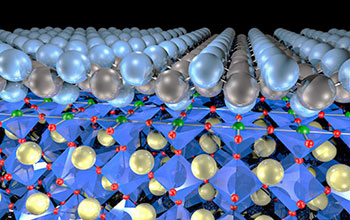Multimedia Gallery
Pseudogap phenomenon explains superconducting temperature change
Cornell University researchers have discovered a rare "pseudogap" phenomenon that helps explain how the superconducting transition temperature can be greatly boosted in a single monolayer of iron selenide.
[Researchers used the Cornell NanoScale Science and Technology Facility, supported by the U.S. National Science Foundation (grant ECCS 2025233).]
Learn more about this research in the Fall/Winter 2021 CNF Nanometer newsletter. (Date image taken: 2021; date originally posted to NSF Multimedia Gallery: Dec. 14, 2021)
Credit: Image provided by Kyle Shen's Research Group, Cornell University
Images and other media in the National Science Foundation Multimedia Gallery are available for use in print and electronic material by NSF employees, members of the media, university staff, teachers and the general public. All media in the gallery are intended for personal, educational and nonprofit/non-commercial use only.
Images credited to the National Science Foundation, a federal agency, are in the public domain. The images were created by employees of the United States Government as part of their official duties or prepared by contractors as "works for hire" for NSF. You may freely use NSF-credited images and, at your discretion, credit NSF with a "Courtesy: National Science Foundation" notation.
Additional information about general usage can be found in Conditions.
Also Available:
Download the high-resolution JPG version of the image. (684.0 KB)
Use your mouse to right-click (Mac users may need to Ctrl-click) the link above and choose the option that will save the file or target to your computer.

